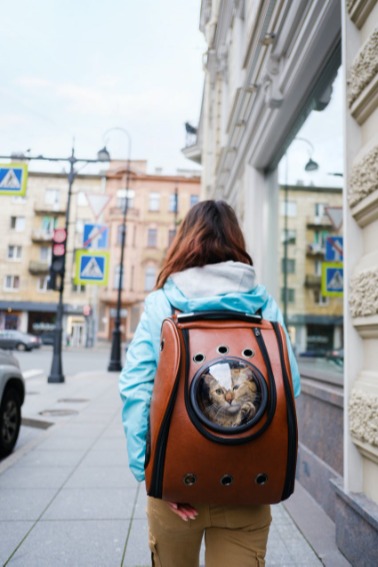How to Get a Cat into a Carrier
By: Alyssa Little / Published July 3, 2021
Safe pet travel is an essential part of being a caring pet owner. Whether you are going on vacation with your feline friend, are boarding your cat (for those human-only vacations), or just need to take your kitten to the veterinarian, eventually you’ll likely need to get your cat in a carrier, which can be a stressful experience for all.
What one would imagine to be a (relatively) simple process can actually become quite complicated, depending on your cat’s behavior or mood. As we all know, cats are particular when it comes to their space. And not all cats take to carriers like bees to honey. So if you’re a new kitten owner — or even a seasoned cat owner — it’s important to recognize that getting a cat in a carrier is a somewhat specialized skill.

Ready to reduce the amount of yowling and drama every time you need to take your cat somewhere? Let this article serve as your guide.
Why do you need to know how to get a cat in a carrier?
Cats are independent creatures. Of course, they like their own space and rarely do things unless they really want to. So why interrupt that? Nold points out the value of teaching a cat to get in a carrier. “It’s important that your cat is comfortable in a carrier, as this is the safest way to transport your cat from your house to another location.” This not only impacts your ability to get your cat safely to the veterinarian, boarding facility, or other location, but on the off chance you are faced with a natural disaster, it is also key to evacuating from your home. (We don’t always think about those considerations, but as responsible pet owners, we should be prepared for emergencies!)
If you do need to get your cat in a carrier quickly (like during an emergency), you may not want this to be your cat’s first experience with their carrier—it can scare your cat or confuse them. After all, not all cats like to be picked up or confined. Consider practicing over time so your cat becomes familiar with the carrier before it becomes a necessity.
A step-by-step guide for getting a cat into a carrier
Getting your pet into their cat carrier doesn’t have to be a Herculean task. We sat down with Trupanion veterinarian, Dr. Sarah Nold, to learn more about the advantages of and tips for seamless carrier training for your feline best friends.
Every cat is unique and might take to the carrier differently. Some cats might go right in on the first try, while for others it is a learning curve. Nold breaks down steps for a successful cat carrier transition:
Step 1—Set up the carrier
Open the carrier and place it in a cat-accessible place where they will feel comfortable to come and go at their leisure. If possible, keep the carrier in a place that is already familiar to your cat. This will only increase your feline friend’s positive association with this newfangled contraption.
Step 2—Turn the carrier into a retreat
Add comfy bedding, favorite toys, or a familiar sweatshirt of yours—your scent will be a source of comfort to them. By making this an appealing place for your cat, they will be more inclined to explore and perhaps even settle in for naptime!
Step 3—Sweeten the deal with tasty treats
Once your cat has familiarized itself with the carrier, try providing an incentive for further exploration by leaving tasty treats or yummy meals inside the carrier. Make them special. Place the food that your cat adores in the carrier—with a daily routine, they might just begin to hang out in the carrier on a regular basis!
Step 4—Start with short trips
After establishing that the carrier is a safe cats-only place, it’s time for an adventure! This can be a problematic stage and you may need to place your cat in the carrier yourself.
But remember—don’t start with a week-long roadtrip! Short trips are the key to success when it comes to convincing your cat that the carrier is not a punishment but rather a vehicle to the world!
Step 5—Reconsider carriers
If all else fails, reconsider carrier options. Your cat might just prefer a top opening versus a traditional door. Or even a bubble backpack. (I know mine does!)



